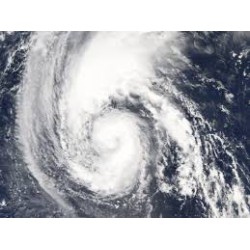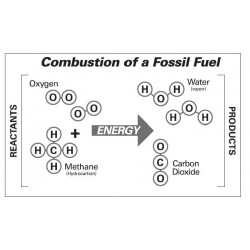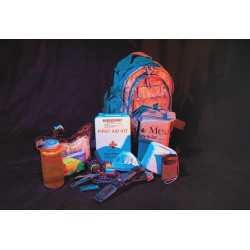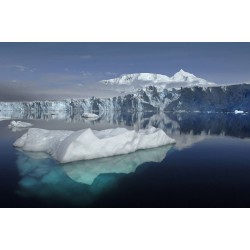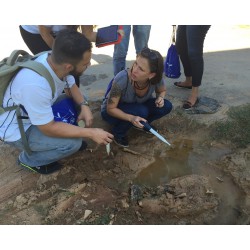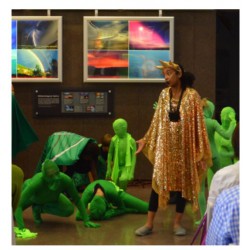Sort
New items
-

Speculative Stories
In this flexible activity patrons imagine future uses of AI tools, and...
-

Ethiquest
In this short activity patrons consider the ethical dilemmas posed by...
-

Data Bites
Patrons create a paper supervised learning machine, and use it to sort...
Weather and Climate There are 27 items.
Can a toaster make wind? That is one of the questions to explore in this specially curated collection of activities on weather. You will find activities for all ages and skill levels.
-
Ocean World: Earth Globe Toss Game
Patrons learn about the amount of water compared to land on the Earth by playing a game tossing an inflatable globe to each other and observing if their hands land on water or land when they catch it 0
Check It Out
-
Pixels on Fire
Patrons learn about how scientists use satellite-data visualizations to detect wildfires from space, and use mobile devices to detect mock wildfires with a pixelation app 0
Check It Out
-
Analyzing Hurricanes Using Web and Desktop GIS
Patrons use a database from NOAA to map hurricanes from different decades, and then build their own map using data from National Atlas to learn about how hurricanes form 0
Check It Out
-
Build Your Own Weather Station
Patrons learn about how atmospheric scientists use highly specialized instruments to measure weather processes, and create their own weather station that can measure relative humidity! 0
Check It Out
-
Chemistry of Burning
Patrons explore the chemistry of fossil fuel combustion by building carbon molecules out of foam balls and pipe cleaners 0
Check It Out
-
Disaster Supplies Kit
Patrons gather supplies they would need to survive after a natural disaster hits, and assemble them into kits 0
Check It Out
-
Flood!
Patrons learn about how different types of soil have different capacities for retaining water, and some can result in flooding problems, by testing three different soil samples (sand, potting soil, and clay) 0
Check It Out
-
Glacier Slide
This activity demonstrates how glacial movement carves the landscape and leaves behind evidence such as moraines, erratics, and U-shaped valleys 0
Check It Out
-
Global Change: Where Land, Air and Water Meet
Patrons use water and food coloring to create a solution to learn about the dissolved chemicals and mixture of gases in Earth's atmosphere 0
Check It Out
-
GLOBE Observer: Mosquito Habitats
This citizen science toolkit of resources and activities will support your library in mapping and collecting data about mosquito habitats in your area. 0
Check It Out
-
Shine - Mini Climate Change Musical
This climate change musical weaves together climate science and performance art into a fun and powerful story, which spans 300 million years of geological time to convey how humanity, energy, and climate are interrelated. 0
Check It Out
How-to Video Teacher's Guide Provides classroom connections, key concepts, connections to science standards, and additional resources. -
Get your Gummy Greenhouse Gases!
Patrons build models of greenhouse gas molecules using colored gumdrops and toothpicks. 0
Check It Out




